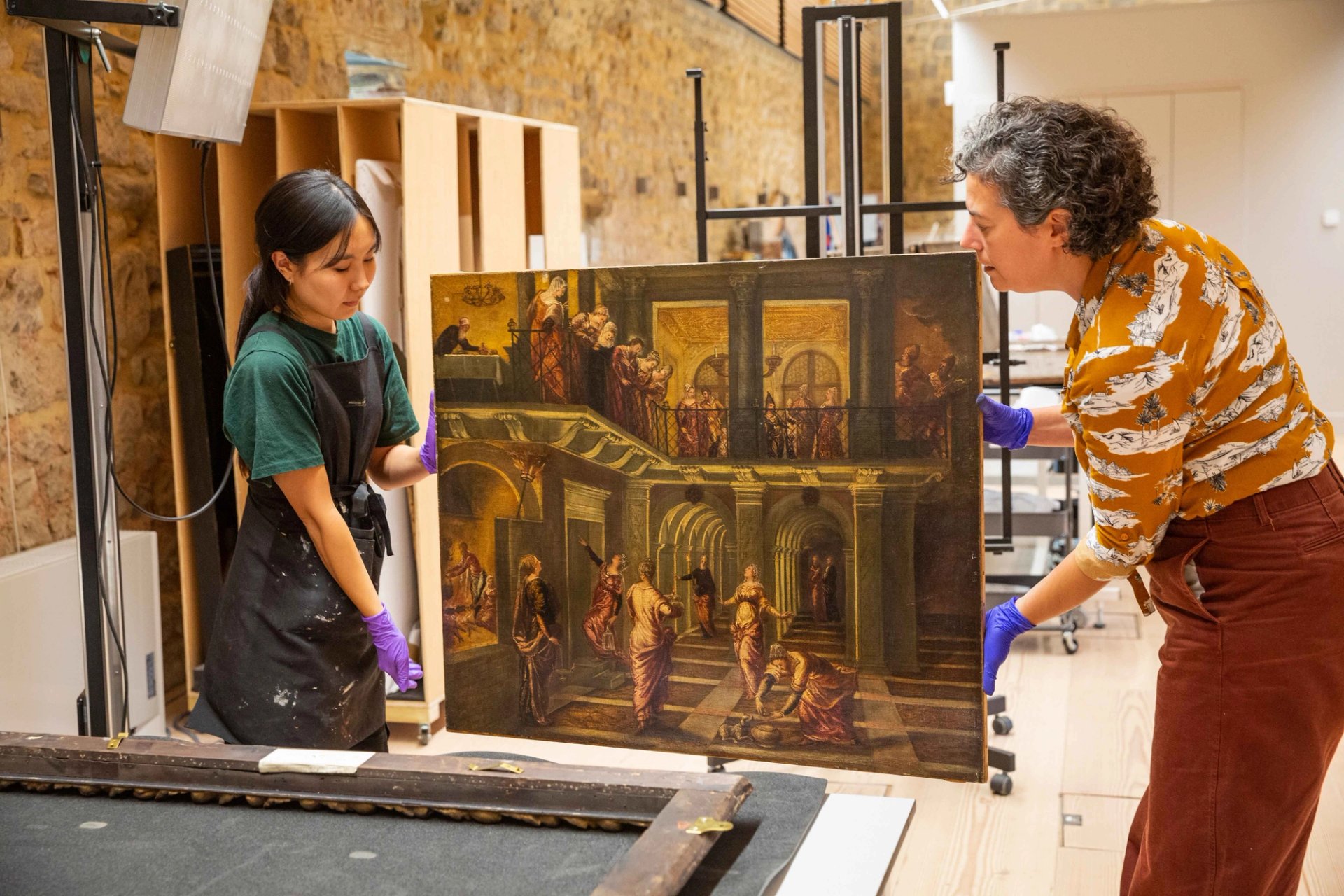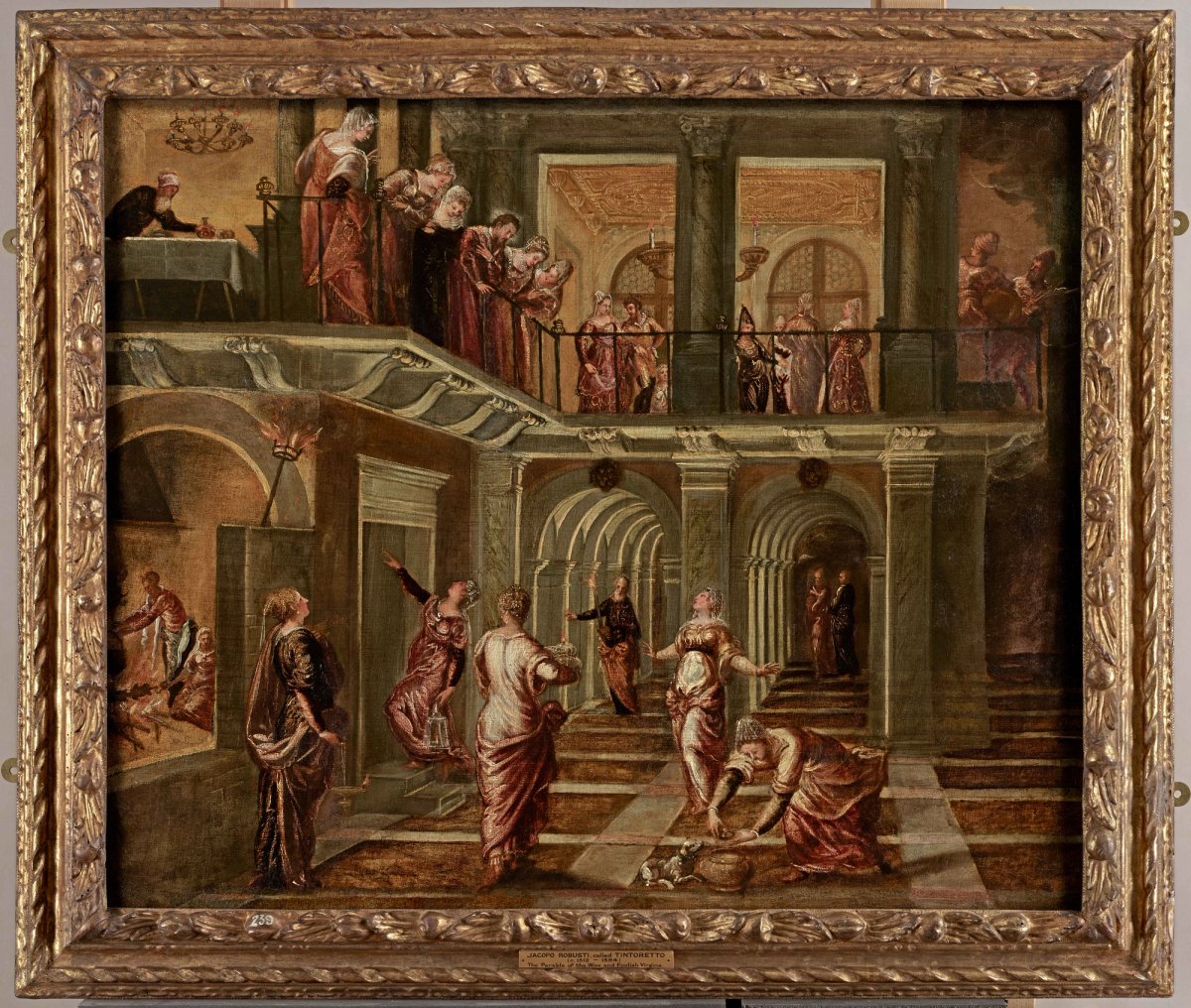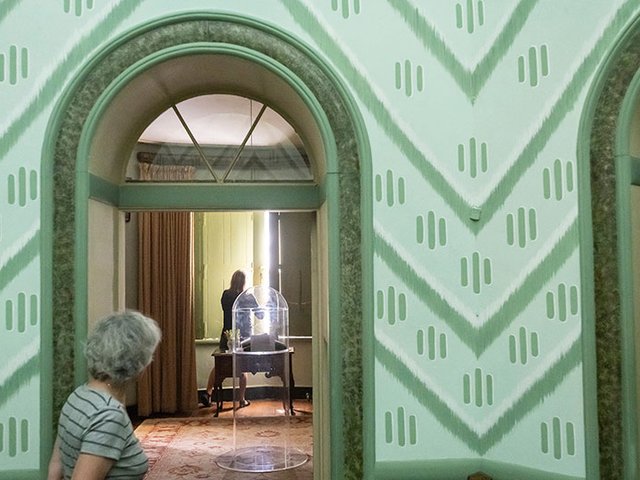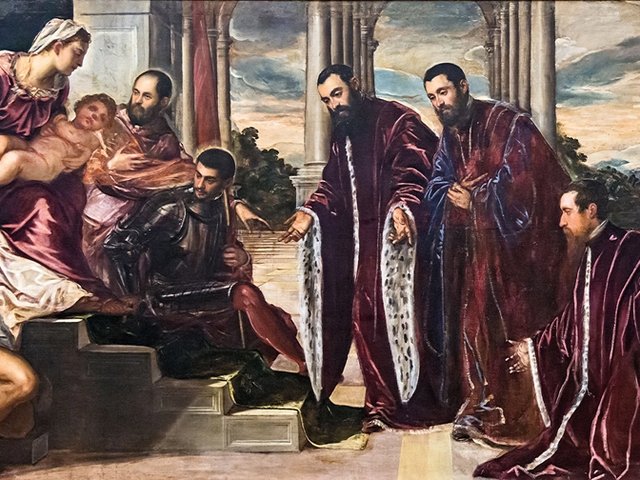A two-year conservation project has revealed the complicated development of a painting by the 16th-century Venetian artist Jacopo Tintoretto, which goes back on public display in Warwickshire, UK on Monday (28 April).
Research done at the National Trust’s Royal Oak Foundation conservation studio showed that the architectural setting which dominates The Wise and Foolish Virgins (around 1546) went through extensive compositional changes before Tintoretto settled on a final version.
A depiction of a stone balcony became faintly visible with x-ray imaging, and corresponds with the balcony extant in a second, related version of the painting housed at the Museum Boijmans Van Beuningen in Rotterdam.
This Boijmans’s painting was previously attributed to Tintoretto and has a later date of 1547-50. The precise relationship to the National Trust painting has long been unclear, however the discovery of the stone balcony in the latter work may lead to a reappraisal.
Rebecca Hellen, the National Trust’s senior national conservator of paintings, says: “The close relationship between the features revealed in the Boijmans and Upton House paintings is something that we look forward to exploring with our community of experts across the globe.”
Ruben Suykerbuyk, the curator of Old Masters at the Boijmans, meanwhile, says: “Even though our painting would still need a restoration and further technical imaging before we would be able to draw firm conclusions about its dating, authorship, and the exact relationship between the two canvases, by all appearances they are closely related and presumably originated in parallel in the same workshop. There are no obvious differences in style or materials, and none seems to be the primary version. And as the Upton House version bears all the technical characteristics of a painting from the Tintoretto workshop, the same seems to go for our painting.”
What else has conservation revealed about Upton House’s Tintoretto?
In the Upton House painting, Tintoretto repainted the balcony as an ironwork structure, opening out the upper register to afford a better view of the richly dressed figures at the wedding feast. Before restoration, criss-cross elements could be seen between the vertical bars, reinforced by previous restorers who understood them as part of the artist’s intended composition.

Tintoretto’s Wise and Foolish Virgins (around 1546) prior to conservation, with the criss-crossing still visible between the vertical iron bars of the balcony
© National Trust Images (James Dobson)
In fact, this latest conservation project has revealed, these features were pentimenti. Close examination of the original paint layers showed that Tintoretto had initially painted criss-cross elements but removed them, only for these features to became visible once again through increasingly translucent, ageing paint layers, exacerbated by previous harsh cleaning. Conservation work has returned this section of the painting closer to how Tintoretto intended it, honouring his pentimenti by using in-painting to reduce the visual impact of the criss cross elements.
Infra-red scanning also showed how the artist removed all elements of the balcony from the far left of the painting, replacing them with an image of a servant laying a table. Non-original paint used to cover up the old extension of the balcony had become visible over time.
Michelle Leake, the National Trust property curator at Upton House, says: “It was surprising to discover a whole new layer of history to the painting that had been hiding under the surface.”
Paint analysis, conducted in collaboration with research organisation Art Discovery, confirmed the presence of a dark ground layer made from palette scrapings—typical of Tintoretto—and a preponderance of translucent, fugitive lake pigments, applied in up to eight layers to achieve the artist’s celebrated depth and intensity of colour.
Conservator Sarah Maisey, who worked on The Wise and Foolish Virgins, adds that “there has been significant pigment change on this painting, and those reds and greens would originally be much brighter”. A “little unusual”, she says, is the real shell gold discovered in highlights on costumes and metalwork.
Market-minded alterations?
The project is as revealing of the painting’s interpretation and treatment over time as it is of the artist’s methods. Dark areas on the x-ray originally thought to be repairs to the canvas correspond to scrolls bearing script on the Boijmans version, indicating that scrolls on the National Trust version were once present, but scraped out. “It's unlikely that that was Tintoretto,” Maisey says. “We think it was much more likely it was a later dealer of some sort, perhaps somebody who thought it might be easier to sell to the English market without the scrolls in place.”
As scrolls had been removed by the time Lord Bearsted—the former owner of Upton House—acquired the painting in 1939, the National Trust made the decision not to reinstate them. The work has been thoroughly cleaned and relined, a process that involves attaching a new supportive canvas to the back, and will go on display again in the house’s Sitting Room.
Paintings by Tintoretto are extremely rare in country house collections and the National Trust has only two. Most of Tintoretto's paintings remain installed in the Venetian churches, palaces and public buildings for which they were commissioned.






